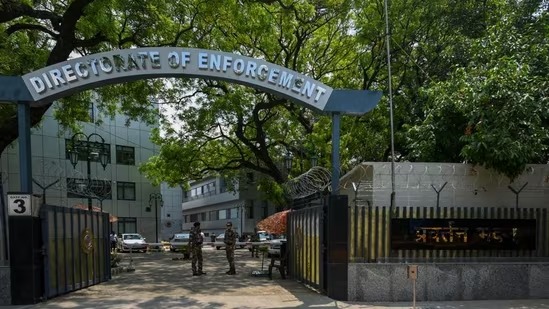The Narcotic Drugs and Psychotropic Substances Act, 1985 (NDPS Act) is one of the toughest criminal laws in India. Unlike most other offences, securing bail under this Act has always been a steep climb. Courts have repeatedly stressed that drug-related crimes affect society at large, and therefore the law places strict conditions on granting bail.
In 2025, the Supreme Court once again underlined this point, in the case Union of India (NCB) vs. Man Singh Verma especially in connection with how courts should deal with cases involving offences like drug trafficking and money laundering. The Court clarified that such offences are considered continuing offences, which means proceedings cannot be shut down at the early stage simply because of procedural or technical arguments. This development makes it timely to revisit how bail works under the NDPS Act and what the latest guidelines mean for both accused individuals and practitioners.
Why Bail under NDPS is different?
Ordinarily, in criminal law, bail is the rule and jail is the exception. But under the NDPS Act, this principle is flipped. Section 37 of the Act lays down what are commonly called the “twin conditions” for bail. A judge cannot grant bail unless:
- The prosecution is given an opportunity to oppose the bail application.
- The judge is satisfied there are reasonable grounds to believe the accused is not guilty and will not commit an offence while on bail.
This is a very high bar. It requires the court to look beyond procedural lapses and focus on whether there is enough material connecting the accused to the offence.
The Supreme Court’s Latest stance in 2025
Recently, the Supreme Court reiterated that offences under the NDPS Act, as well as related laws like the Prevention of Money Laundering Act (PMLA), are continuing in nature. This means the offence is not confined to the date of the initial act but carries on as long as its proceeds or effects continue.
The Court warned lower courts not to quash proceedings prematurely at the stage of discharge or while considering petitions under Section 482 of the Code of Criminal Procedure (CrPC). In simple words, the Court said: let the trial happen. Defendants can present their case and evidence during trial, but courts should not short-circuit the process in the name of early relief.
Why “continuing offence” matters
The concept of a continuing offence changes the way courts view bail applications. If the offence is treated as ongoing, the prosecution has more room to argue that granting bail could interfere with the investigation or allow the accused to benefit from the continuing crime.
For example, in money laundering cases linked to NDPS offences, the “proceeds of crime” may still be in circulation. The Court’s reasoning is that shutting down the case too early could defeat the very purpose of the law.
Quashing vs Trial: The Distinction
One of the most significant points made by the Supreme Court is the difference between quashing a case at the preliminary stage and letting the trial proceed.
- Quashing: This is when a higher court ends the case at the threshold, usually on grounds that there is no material to proceed.
- Trial: This is the full process where evidence is presented, witnesses are examined, and the court decides guilt or innocence.
The Supreme Court has stressed that unless there is a glaring legal defect, courts should be reluctant to quash NDPS or PMLA cases early on. The emphasis is on preserving the right of the prosecution to prove its case at trial.
What this means for Defendants
For individuals accused under the NDPS Act, these guidelines bring both clarity and caution.
- Harder to get early relief: Applications seeking discharge or quashing at the High Court level are now less likely to succeed, given the Supreme Court’s warning.
- Greater focus on trial strategy: Defendants will need to prepare a robust trial defence rather than relying solely on technical objections at the beginning.
- Bail remains strict: Section 37 conditions continue to make bail difficult. Accused persons will need to show genuine lack of evidence connecting them to the offence or highlight infirmities in the prosecution’s case that affect the “reasonable belief” test.
Implications for Practitioners
Lawyers handling NDPS bail matters now need to factor in the Court’s reaffirmed position:
- Emphasise factual weaknesses rather than expecting early discharge.
- Prepare clients for the long haul of trial proceedings.
- Focus bail applications on showing lack of connection to the offence, not just procedural lapses.
- Keep in mind that “continuing offence” will strengthen the prosecution’s case against quashing.
These points underline that bail practice under NDPS is not about quick fixes but about carefully building a defence that can withstand close scrutiny.
Balancing Rights: Prosecution vs Defence
The Supreme Court’s latest rulings reflect a balancing act. On the one hand, the Court has protected the prosecution’s right to present its case fully. On the other, it has reminded trial courts that the conditions under Section 37 are not impossible to meet. If the evidence against an accused is weak or unreliable, courts can and should grant bail.
This balance is vital. NDPS cases often involve long investigations, and prolonged custody can affect the rights of individuals. At the same time, the gravity of drug-related offences demands that courts remain cautious before releasing someone who may still be involved in ongoing criminal activity.
Looking Ahead
The message from the Supreme Court in 2025 is clear: NDPS cases are too serious to be dismissed lightly. The trial process must be respected, and bail will only come through once courts are convinced of the accused’s lack of involvement.
For defendants, this means preparing for a more structured defence and working closely with counsel to address both the legal and factual aspects of the case. For practitioners, it means planning litigation strategy with a longer timeline in mind, keeping both bail and trial stages in focus.
Conclusion
Bail under the NDPS Act has always been an uphill task, and the Supreme Court’s latest guidelines make that climb even steeper at the initial stages. By treating offences as continuing and discouraging premature quashing, the Court has given the prosecution stronger ground. Yet, the door to bail is not closed; it simply requires a more deliberate and evidence-driven approach.
For those facing NDPS charges, understanding these nuances can make the difference between unrealistic expectations and a clear, practical strategy.


